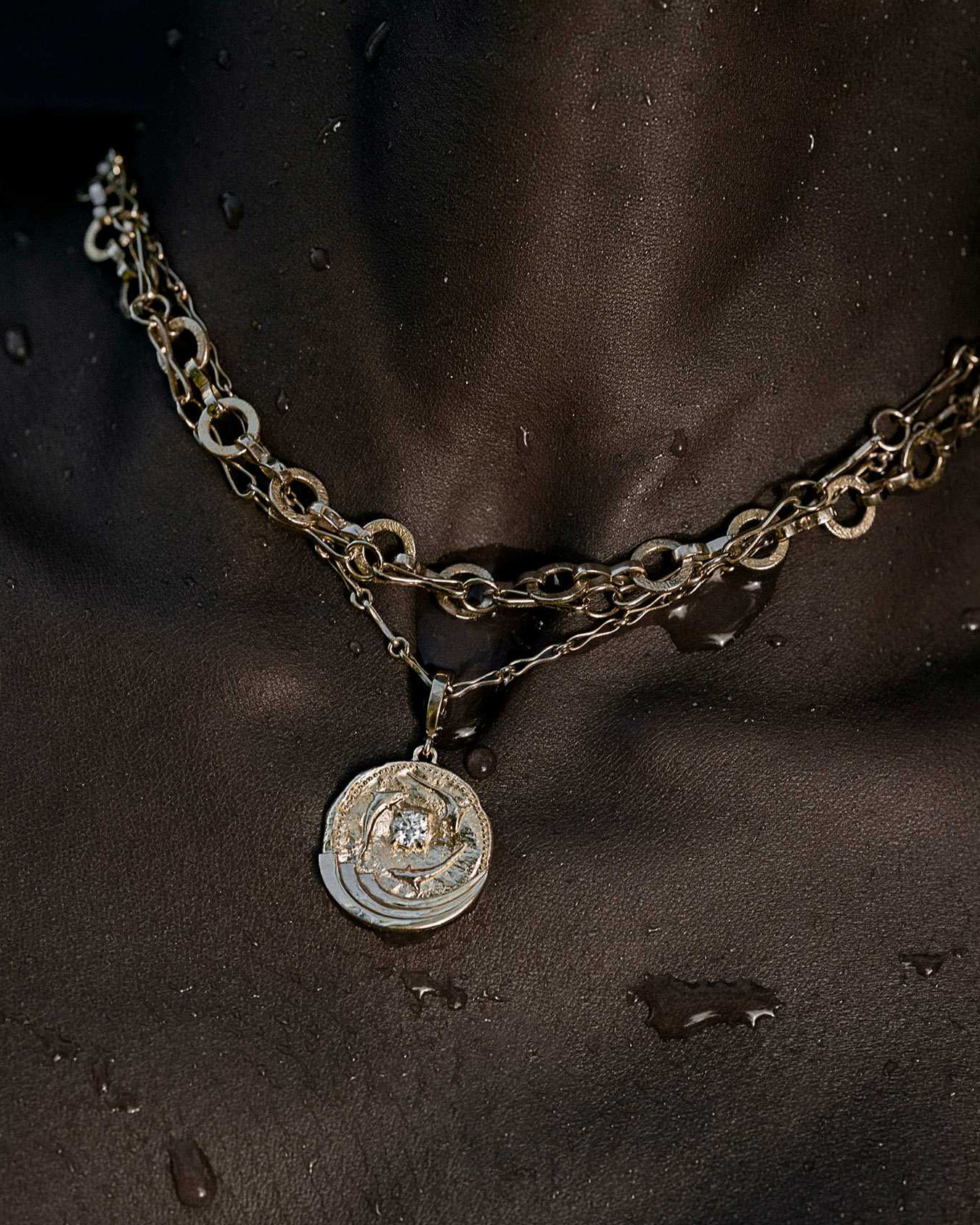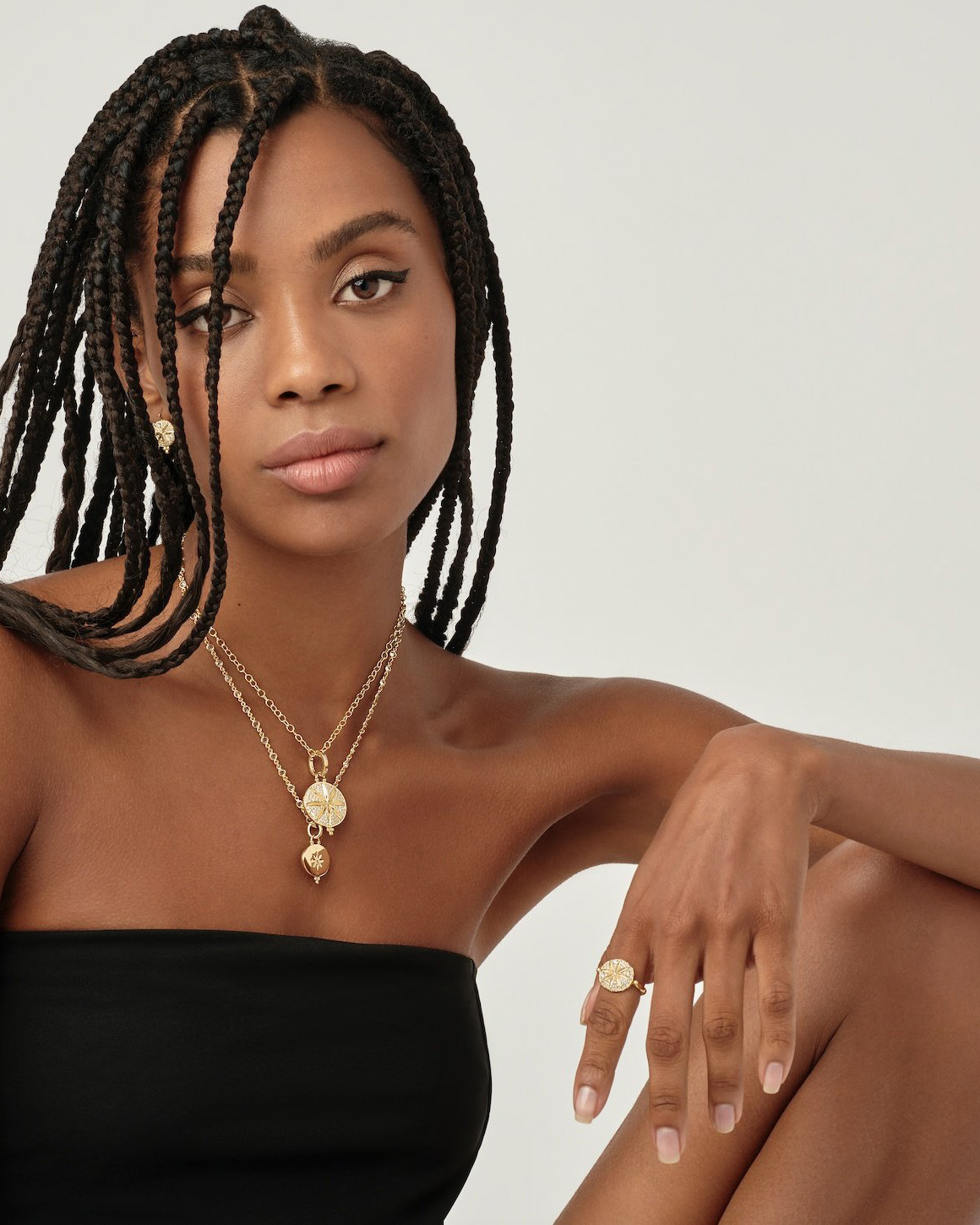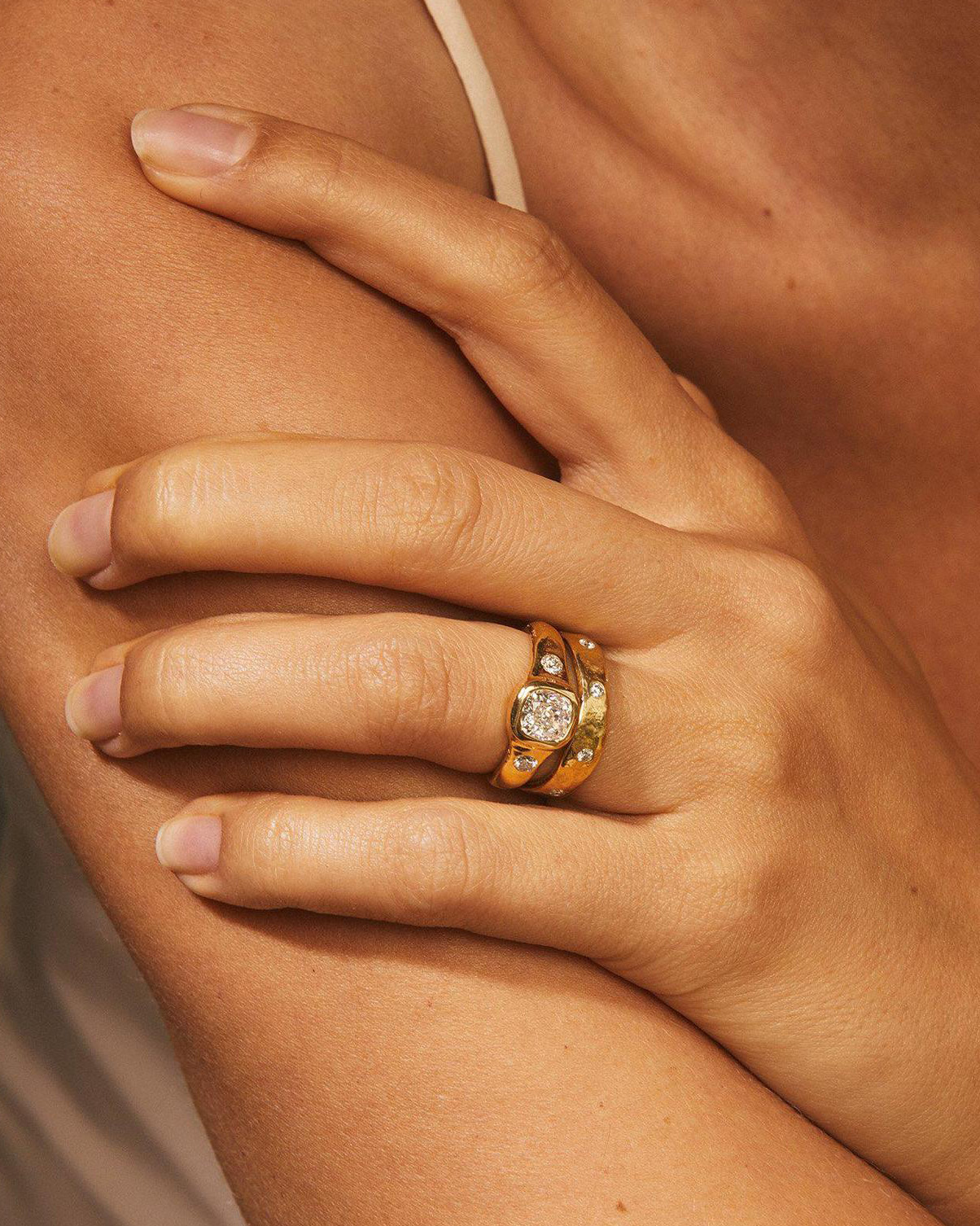5 Sustainable Jewelry Designers You Should Know
Meet the sustainable jewelry designers making exceptional diamond jewelry from responsibly sourced materials.

Between the recent bouts of extreme weather and the pandemic’s upheaval of, well, everything, sustainability is no longer just an altruistic buzzword—it’s a concern in countless facets of everyday life. For most, this comes down to what we consume and how we consume it, from what we eat to what we wear. And while the conversation around sustainability frequently touches on fashion, making more ethical choices in one’s jewelry box isn’t quite as clear-cut. It’s a complex topic, to be sure, but there are a number of brands that are helping to define what sustainable jewelry means today.
Being dazzled by a beautiful jewel, it’s easy to forget that those exquisitely polished baubles began life as rocks forged from the earth. Diamonds, gold, platinum—they’re all natural resources and, quite literally, the most precious ones. As such, sustainable jewelry begins with responsibly sourced materials. Knowing what that means, however, is not as simple as spotting a “certified organic” sticker on a tomato. There are numerous ways in which mining gemstones and precious metals can take a toll—from contaminating landscapes with toxic byproducts to endangering miners—which can make it tricky to know what to look for when shopping for a conscientiously crafted jewel.
Read More: Diamonds That Dare to Be Different
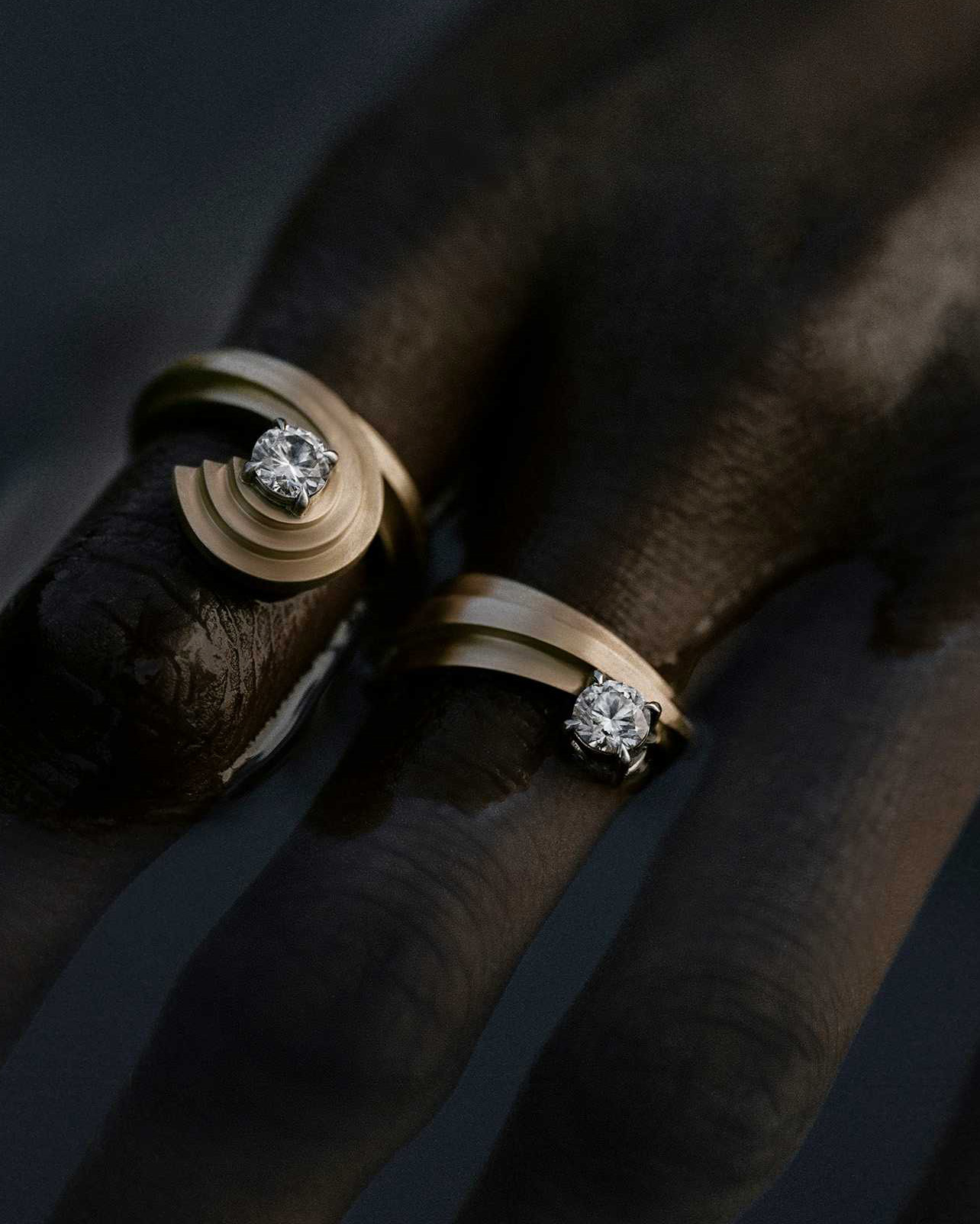
“There are many words that are being used without necessarily caveating them with an explanation: green, ethical, sustainable, responsible, etcetera,” says designer Pippa Small, who began her career working in human rights organizations supporting indigenous communities in Borneo, Thailand and India before collaborating with these groups on creating jewelry. “It’s important to be transparent about their meanings for each company.”
While every jeweler might define such terms differently, there are several industry-wide organizations that have set out to define and certify a few key elements of sustainability as it pertains to bijoux. Chief among them is the Responsible Jewelry Council, or RJC, which was founded in 2005 with the goal of setting standards for sustainability throughout the supply chain in the jewelry and watch industry. The RJC’s members, which include the likes of Tiffany & Co., Cartier, De Beers and some 1,450 other brands and manufacturers, are vetted by a third party to insure that they adhere to a code of practices encompassing everything from labor conditions to transparent marketing.
New York-based jeweler Temple St. Clair recently became one of the first smaller, independent brands to receive RJC certification. “We have entered this decade of change where there is absolutely no solution but to decrease our negative impact on the planet, both at the human and environmental level,” St. Clair says. “Certification demonstrates our brand’s commitment to responsible practices around human rights, social issues and the environment…from mine to retail.”
While RJC certification may be the gold standard for sustainable jewelry businesses, the stringent requirements can make it difficult for many smaller brands to achieve. However, there are numerous other ways in which jewelers are affirming their commitment to creating jewelry responsibly.
One of the biggest concerns when shopping for ethical diamonds, in particular, is the origin of a design’s gemstones. “Blood diamonds” became an unfortunate headline in the early aughts, casting a shadow of suspicion on the entire diamond industry. How can one be sure that the solitaire in front of them was mined under safe, fairly paid conditions? The industry responded to such questioning by developing the Kimberly Process, which certifies that a diamond is conflict-free. Inquiring about Kimberly Process certification can provide clarity as to the ethics of a diamond’s origins and many sustainable jewelry brands are proud to detail how and where they sourced their stones.
Another major component in any sustainable jewel is the metal. Gold mining is a notoriously toxic process that generates tons of waste laden with cyanide, mercury and other heavy metals. But, that is no longer always the case. Founded in 2004, Fairmined is a gold-specific certification similar to the RJC, vetting the precious metal for adherence to its own code of standards for environmental impact, workers’ rights, fair pricing and much more. And, increasingly, jewelers are going one step further and committing to only using recycled gold, which eliminates the bulk of gold’s environmental impact by repurposing existing ore.
Upcycling is a brilliant solution in many ways, but it overlooks the good that mining can bring to a community: jobs, infrastructure, education, opportunity. That is one reason why sustainable jewelry isn’t a black and white issue; there are countless nuances that add up make an ethical sparkler. Just look at the five designers below, each of whom are creating sustainable jewelry with their own mindful practices.
Meet the 5 Sustainable Jewelry Designers You Should Know
1. Temple St. Clair
As one of the first independent jewelers to receive RJC certification, Temple St. Clair is a prime example of jewelry done sustainably. Still, the designer is weary of using that ubiquitous term: “We define our practices by assessing impact and exercising what we see as our responsibility.” St. Clair puts that into action by working with small-scale suppliers and manufacturers, including the Italian goldsmiths who craft her antiquity-inspired, diamond-studded designs, and launching a host of philanthropic initiatives. St. Clair and her team give back to numerous organizations, ranging from local NYC foodbanks to African wildlife conservation, and are working towards eliminating the use of plastic packaging materials, reducing energy consumption in their daily studio and limiting carbon emissions.
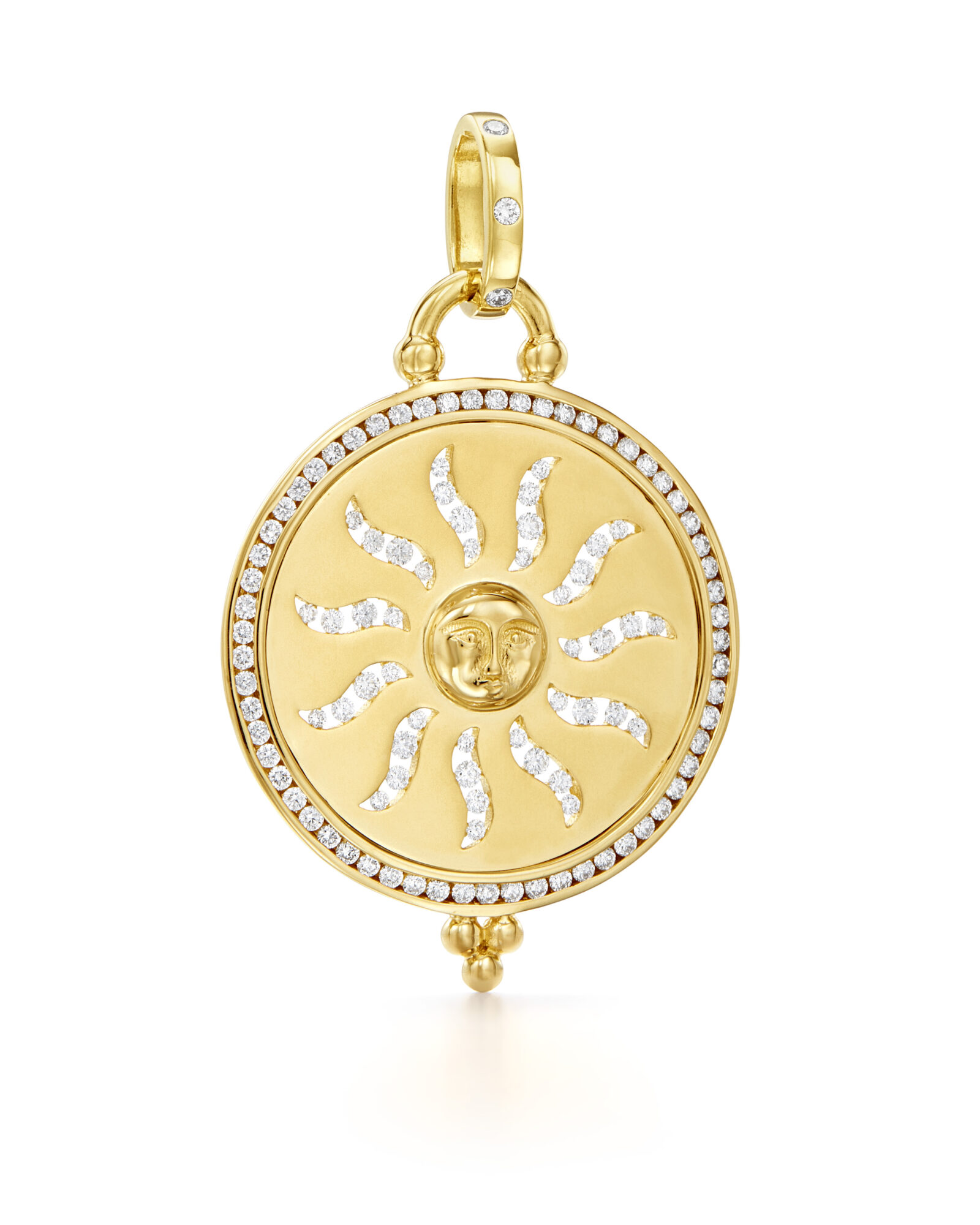
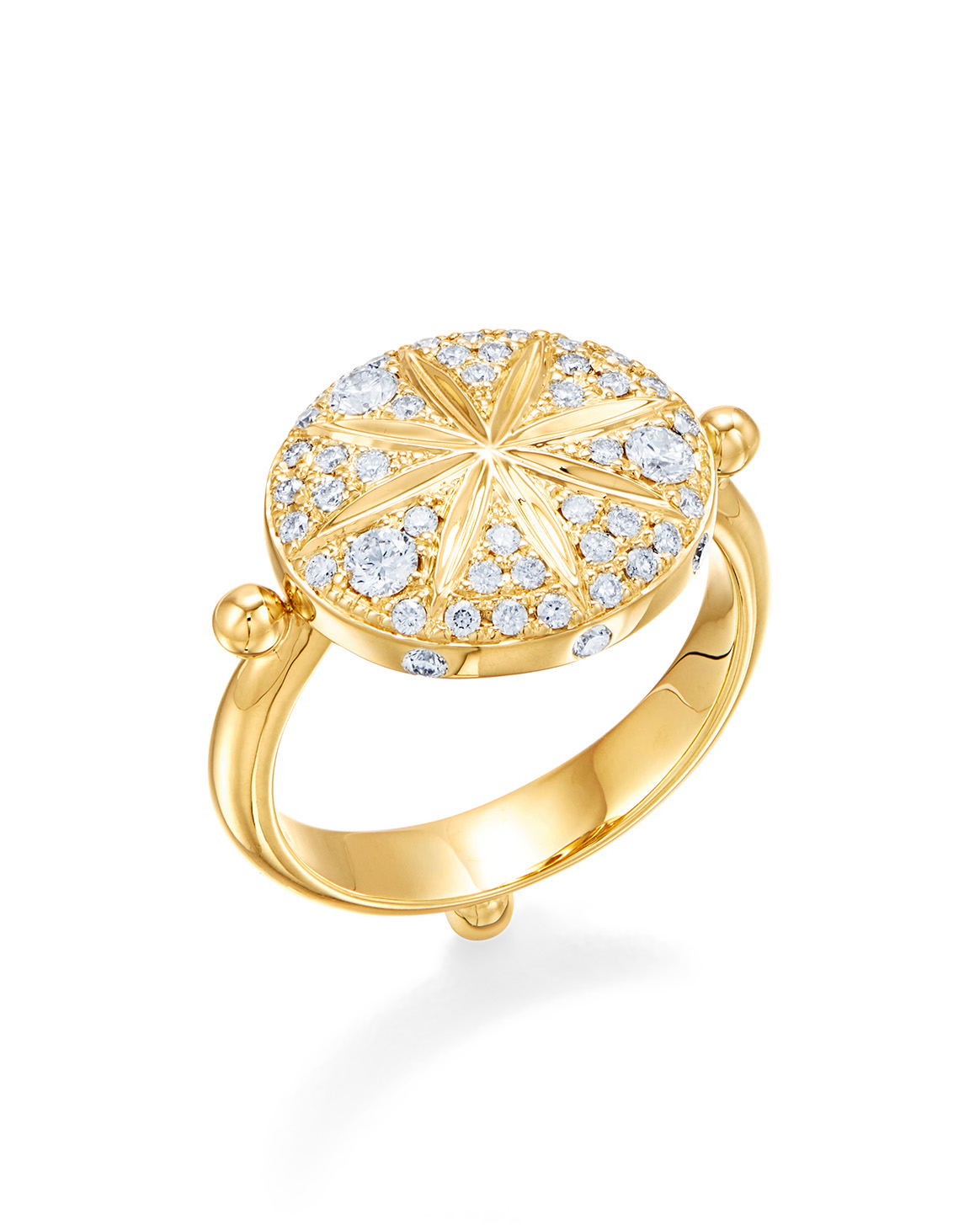
Temple St. Clair diamond and 18kt gold pendant, $7,000, and ring, $4,500
2. Pippa Small
Although Pippa Small is based in London, she purposefully choses to produce her jewelry in communities abroad. “For me, sustainable means jobs for artisans in areas of the world where there is little opportunity, especially for women, or fragile economies due to conflict, refugee communities and areas of extreme poverty,” Small says. She’s been partnering with the same workshops in Afghanistan, Bolivia, Myanmar and India for, in some cases, over 25 years to craft jewels that celebrate their local design heritage—most directly in her collections done in collaboration with the Turquoise Mountain Foundation. “To watch young apprentices grow…and to also see girls be among the first of their generation to be working in an area that is traditionally quite male-dominated, is exciting.” Small also works with Fairmined gold and family-run mines that she has personally visited. “It is a growing area,” she says of sustainable mines, adding that she hopes to find more that are “transparent about where and how they mine and the impact it has on the communities and environment.”
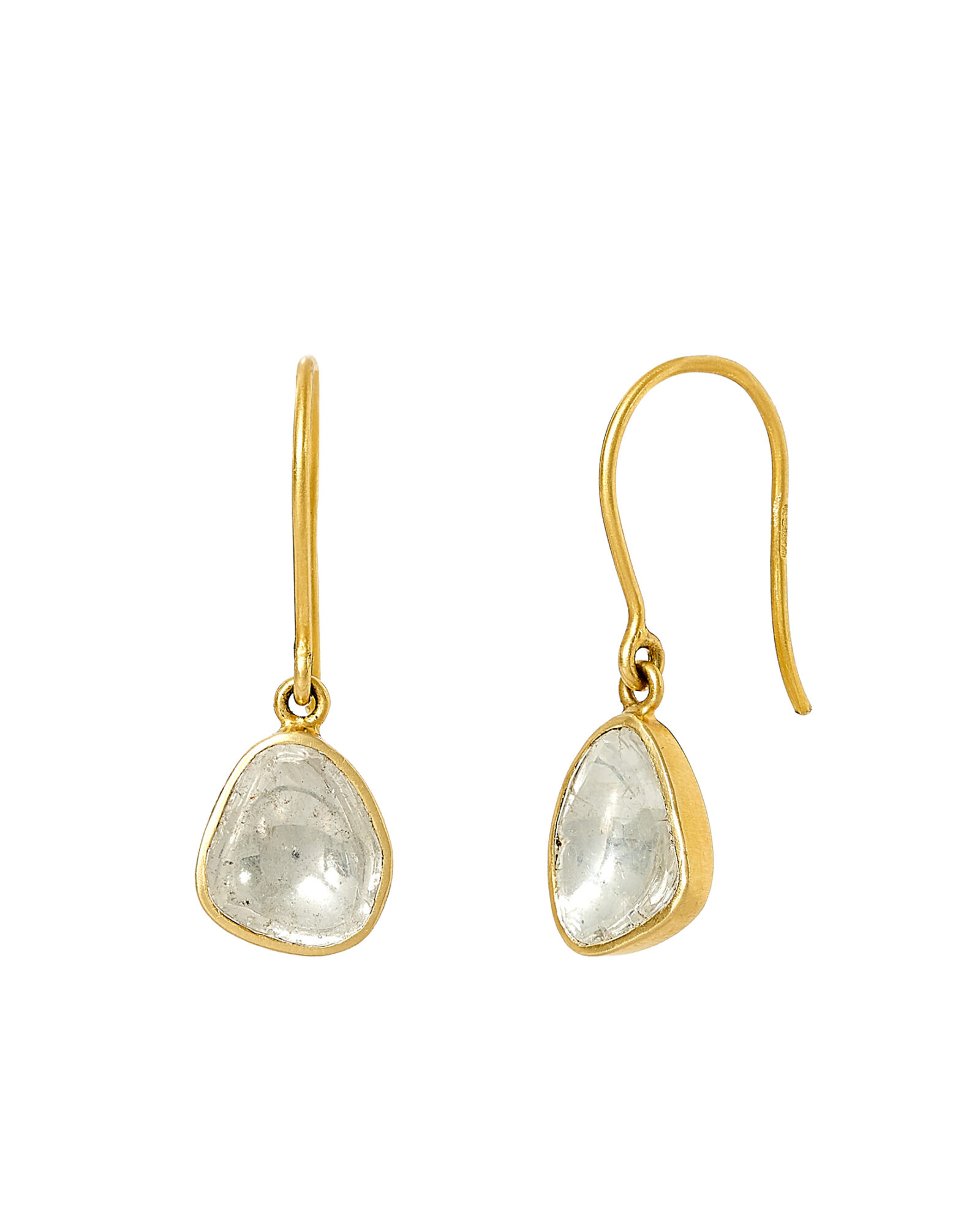
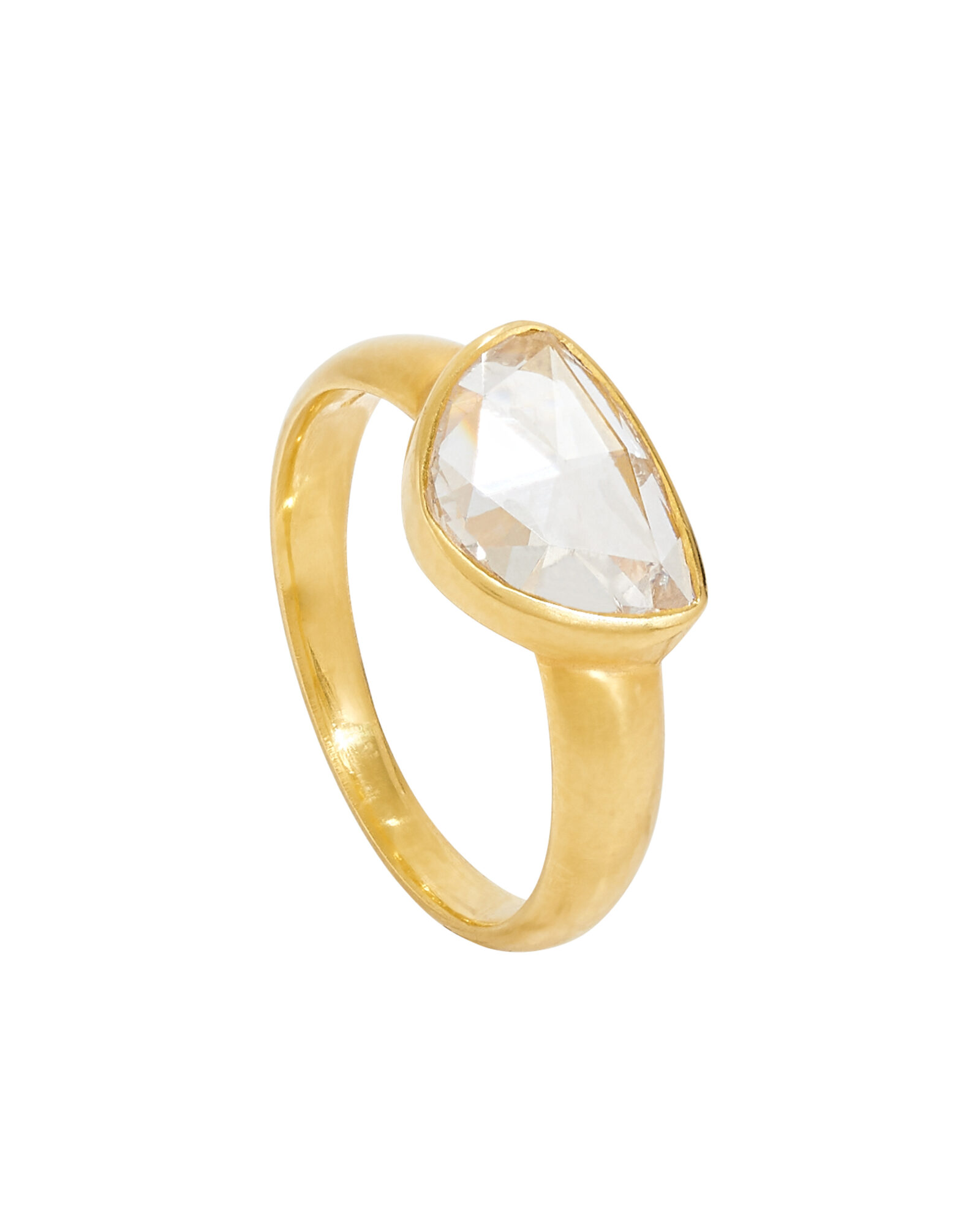
Pippa Small foil-backed diamond earrings, $2,130, and diamond and 18kt gold ring, $6,850
3. Pamela Love
For New York-based designer Pamela Love, sustainability is primarily about responsible sourcing. “I think about the treatment of the workers in the mines as well as those working on the actual jewelry,” she says, adding that she vets for manufacturing partners “who make sure their artists are treated well and set up for success.” Love’s earthy, talismanic designs exclusively use recycled gold and conflict-free diamonds, and her one-of-a-kind pieces only feature gemstones upcycled from antique and estate jewels. She has also partnered with Turquoise Mountain on a collection that employs artisans in Afghanistan and Guatemala and, closer to home, has shifted her office to run on alternative energy sources. “There is so much product, and particularly jewelry, made in irresponsible ways: bad for the environment, bad for people, companies only caring about money,” Love says. “I think it’s important to provide alternatives to that…We are by no means perfect, but we are making the effort and trying every day.”
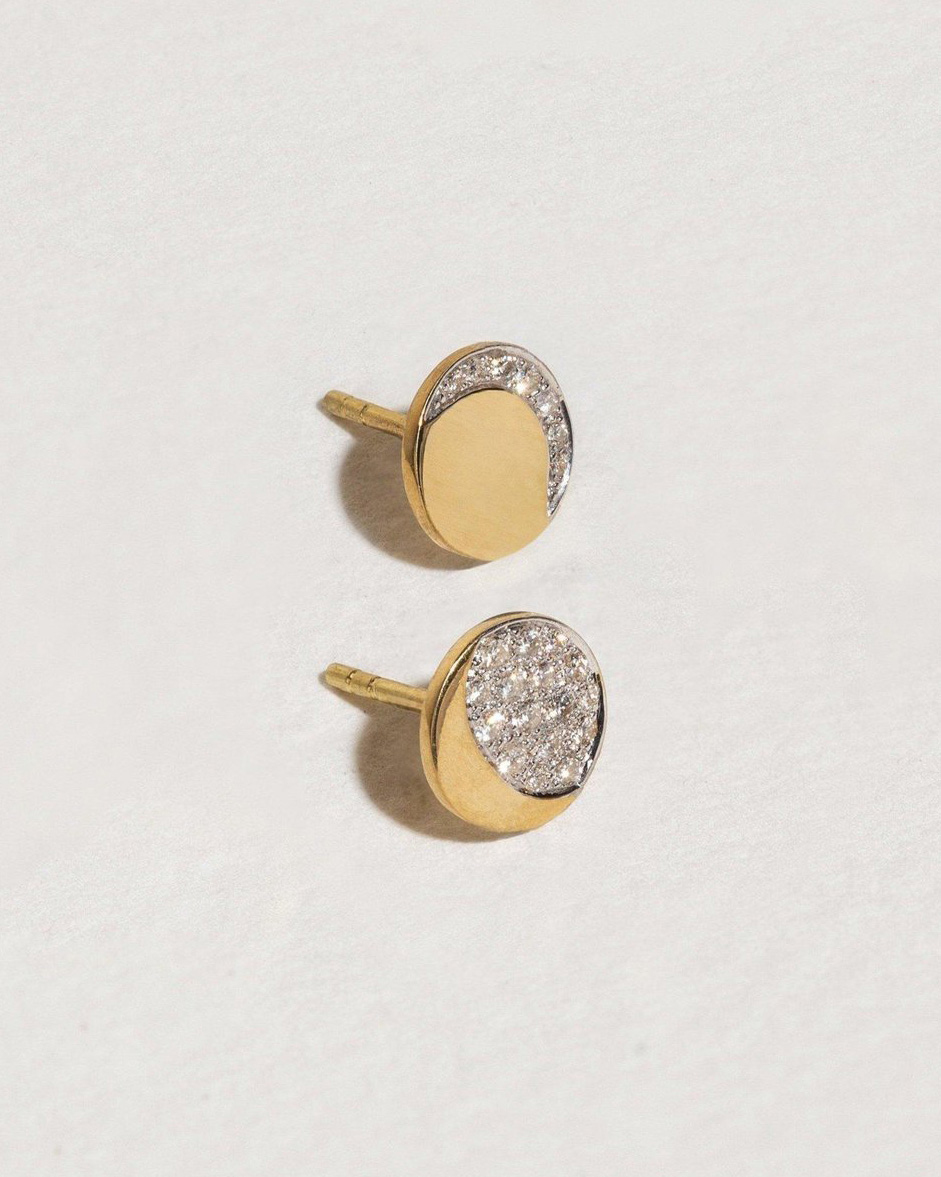
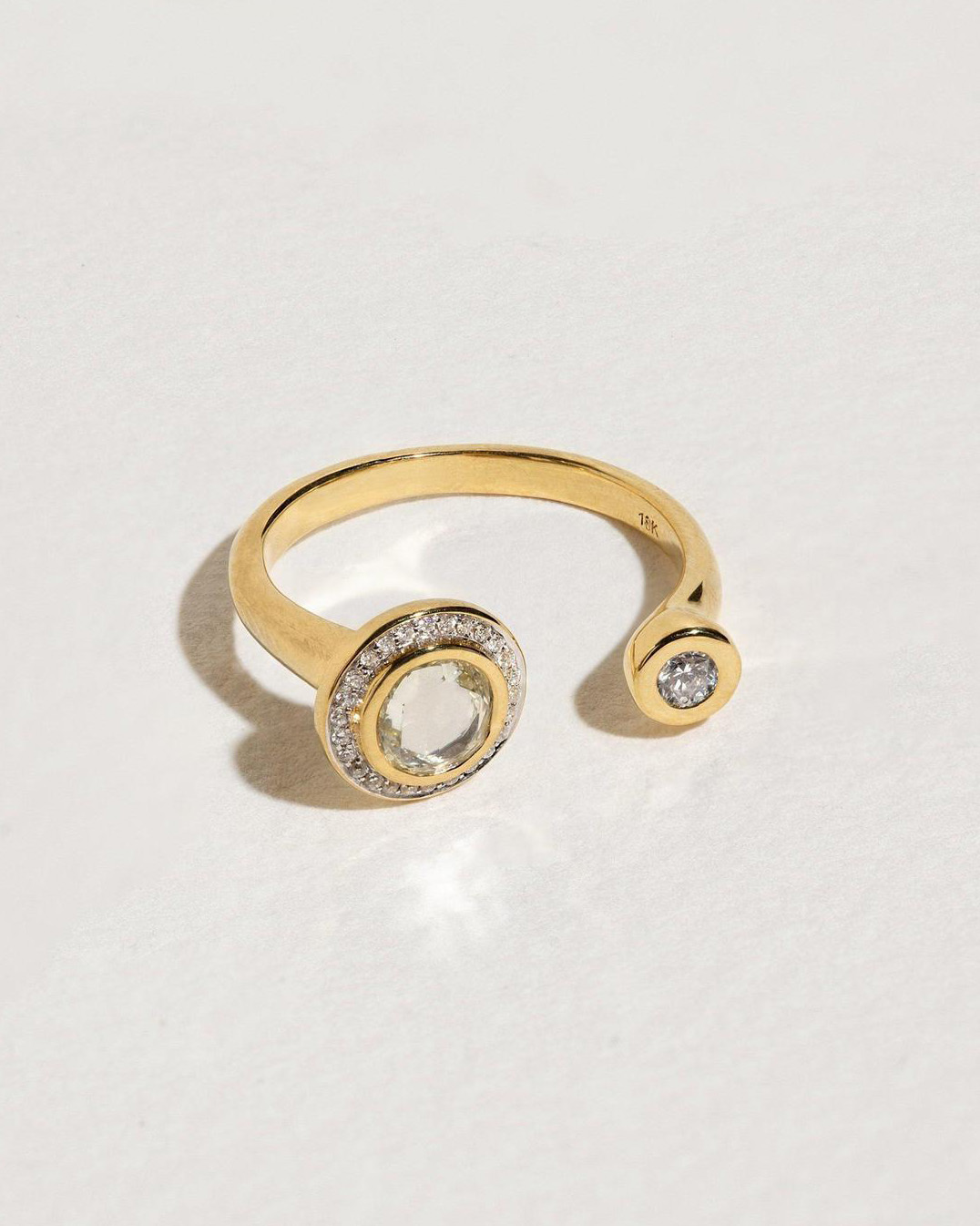
Pamela Love diamond and 18k gold studs, $1,200, and ring, $3,040
4. Cathy Waterman
When asked how she defines sustainability, LA-based jeweler Cathy Waterman looks at the big picture: “My philosophy is that you have to live with yourself every day and wake up feeling at peace with the world.” It’s a broad mantra but it informs every decision that goes into her delicate, feminine designs. “My jewelry has a positive energy to it,” she adds, “it requires good energy all along the way.” A favorite of red-carpet regulars, Waterman handcrafts all of her pieces at her Santa Monica studio—a practice that cuts out a great deal of carbon emissions and production excesses. Producing in her proverbial backyard, Waterman is able to be directly involved in the well-being of her team at every step of the jewelry-making process. “It is crucial the everyone who works with us in the design studio and in the shop are happy at work and in their lives.” Furthermore, she exclusively uses recycled gold and platinum alongside responsibly mined diamonds and gems procured from “a select group of stone vendors that I have known for many years.”
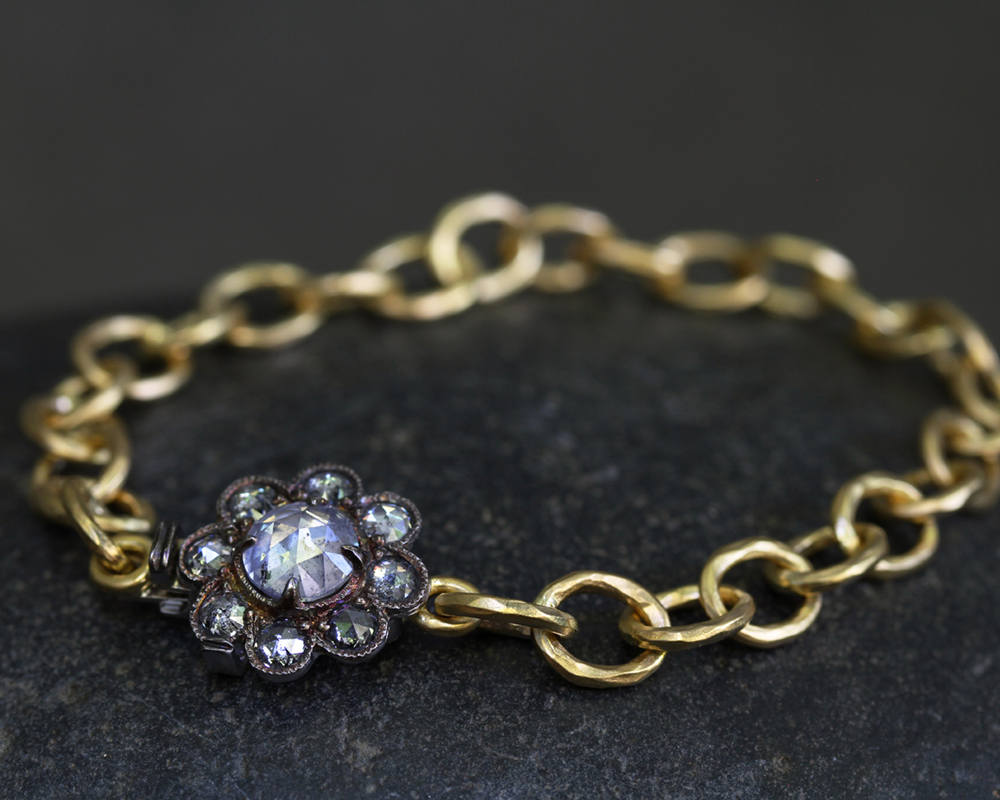
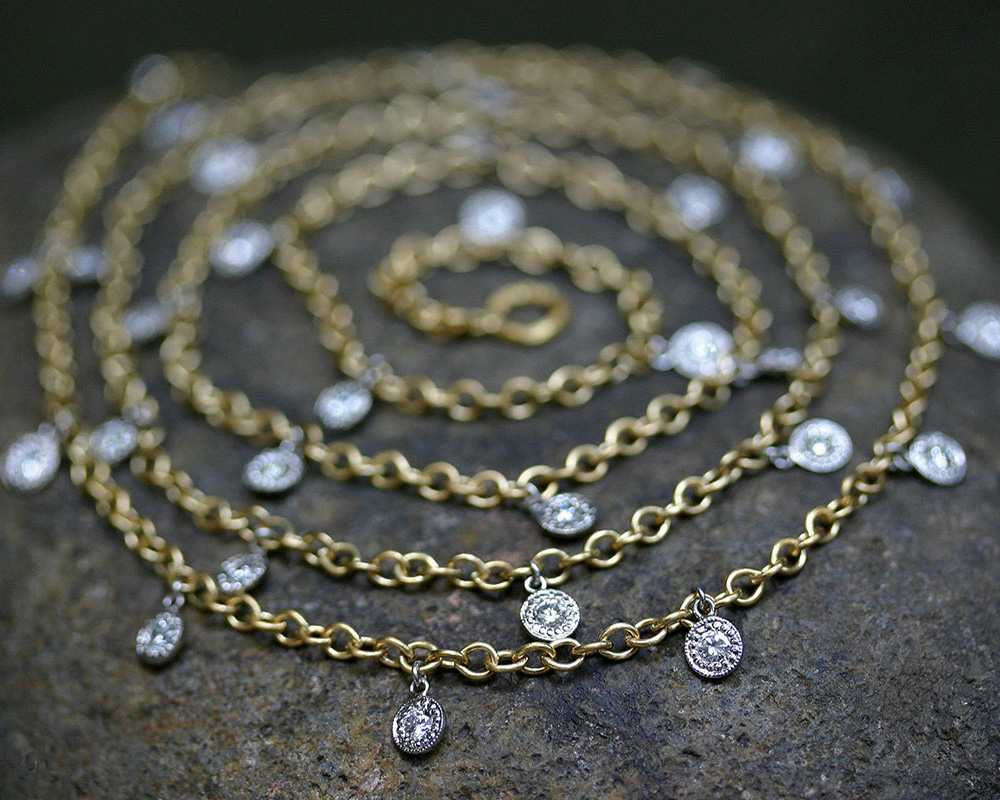
Cathy Waterman diamond, 22kt gold and platinum necklace, price upon request
5. Azlee
Azlee designer Baylee Zwart first found her calling when she learned metalwork while working with a fair-trade non-profit in Guatemala. Upon returning to her hometown of LA, she founded her brand with a clear emphasis on sustainability and a decision to manufacture everything in Los Angeles. “One of the beautiful things about fine jewelry is that there is still the opportunity to produce locally,” she says, noting that she has direct visibility into her supply chain to ensure her suppliers are operating as responsibly as possible. Azlee’s sleek, understated designs use 95 percent recycled gold and prioritize the use of vintage and ethically-sourced diamonds. As an avid surfer and scuba diver, Zwart is passionate about marine conservation and donates a portion of each sale to ocean-related causes. Moreover, she recently created a collection featuring natural diamonds sourced from the oceans of Namibia and South Africa, which were procured without conventional mining and are fully traceable.
